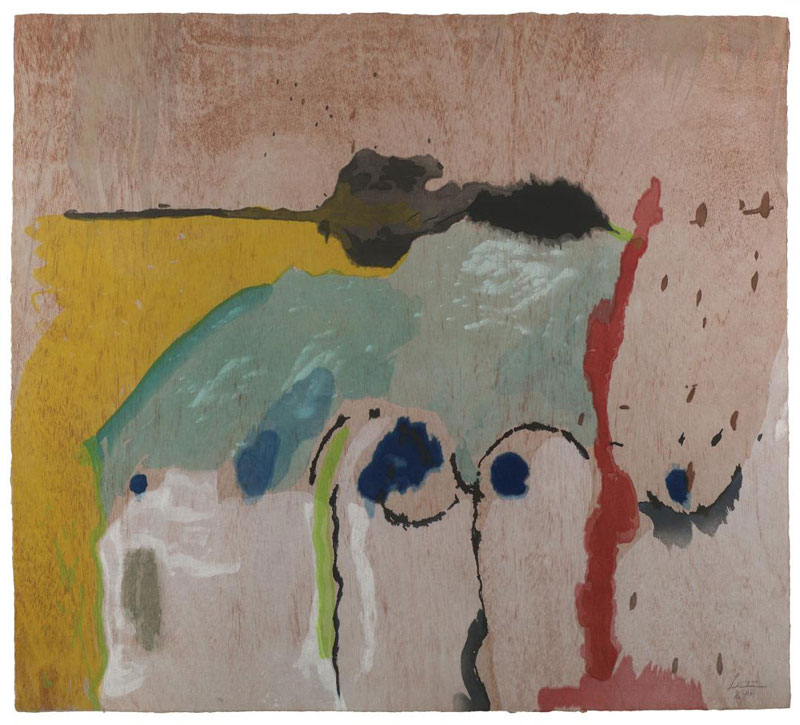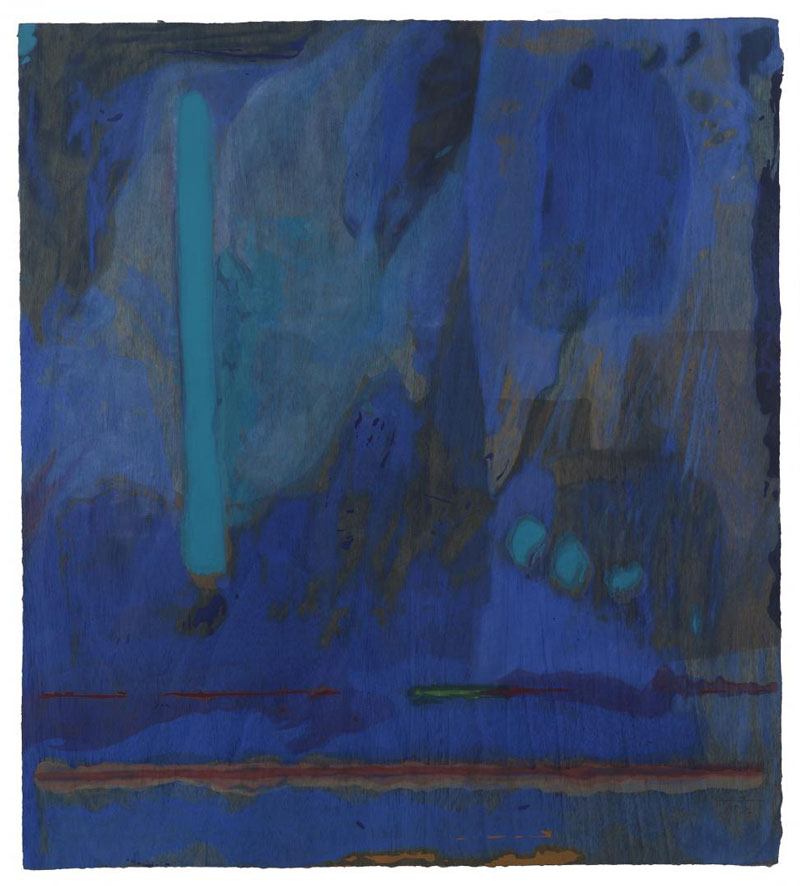ART CITIES:Bergen-Helen Frankenthaler
 Helen Frankenthaler, whose career spanned six decades, has long been recognized as one of the great American artists of the 20th Century. Heir of first-generation Abstract Expressionism, she brought together in her work a conception of the canvas as both a formalized field and an arena for gestural drawing. She was eminent among the second generation of postwar American abstract painters and is widely credited for playing a pivotal role in the transition from Abstract Expressionism to Color Field painting.
Helen Frankenthaler, whose career spanned six decades, has long been recognized as one of the great American artists of the 20th Century. Heir of first-generation Abstract Expressionism, she brought together in her work a conception of the canvas as both a formalized field and an arena for gestural drawing. She was eminent among the second generation of postwar American abstract painters and is widely credited for playing a pivotal role in the transition from Abstract Expressionism to Color Field painting.
By Efi Michalarou
Photo: KODE Archive
The exhibition “Helen Frankenthaler Woodcuts: Prints and Proofs” brings together 23 of her groundbreaking works from 1973 to 2009, as well as 25 proofs and original paintings on wood used to make several of the images. It includes her best-known examples, ranging from the early “East and Beyond” (1973), “Savage Breeze” (1974) and Essence Mulberry (1977) to “Cameo” (1980), “Cedar Hill“ (1983), and “Radius” (1993) to later works such as the “Tales of Genji” series (1998), “Madame Butterfly” (2000), and her last woodcut, “Weeping Crabapple” (2009). Each work reveals a distinctive approach to color and form and a desire to push the limits of what had been thought feasible in the processes of making woodcuts. Helen Frankenthaler was born and raised in a wealthy Manhattan family with her two older sisters. Her father was a judge on the New York State Supreme Court and died of cancer when she was eleven years old. The loss affected her deeply, sending Helen into a four-year period of unhappiness during which time she suffered from intense migraines. At fifteen, Frankenthaler was sent to the Dalton School in New York and began to study under the Mexican painter Rufino Tamayo. By the time she was sixteen, she decided to become an artist, enrolling in Bennington College in Vermont, where she studied under Paul Feeley, who was fundamental in arranging exhibitions of Abstract Expressionists. In 1948, Frankenthaler moved back to New York. Two years later, she met the prominent art critic Clement Greenberg. They began a romantic relationship that would last for several years, during which time Greenberg introduced her to several leading Abstract Expressionists artists, including Willem de Kooning, Lee Krasner, Jackson Pollock, and Franz Kline. Greenberg also prompted Frankenthaler to study under Hans Hofmann in 1950. 1952 was the breakthrough year for Frankenthaler; upon returning home from a trip to Nova Scotia, she created “Mountains and Sea”, a groundbreaking canvas where she pioneered her “soak-stain” technique. Working on a large canvas placed on the floor, Frankenthaler thinned her oil paints with turpentine and used window wipers, sponges, and charcoal outlines to manipulate the resulting pools of pigment. The following year, Greenberg brought the painters Morris Louis and Kenneth Noland to Frankenthaler’s studio to see “Mountains and Sea”, their excitement over the work led to their experimentation with Frankenthaler’s soak-stain technique and to the development, with Frankenthaler, of Color Field Painting. In the years that followed, Frankenthaler continued using the new method she had developed, drawing on her abiding love of landscape for inspiration. In 1957, she Robert Motherwell, another leading Abstract Expressionist painter, and the following year they began their thirteen-year marriage, marking a period of mutual influence in their artwork. In 1964, her work was included in an exhibition curated by Clement Greenberg at the Los Angeles County Museum of Art. Identifying this new strain of painting that emerged out of Abstract Expressionism, Greenberg titled the show “Post-Painterly Abstraction” his preferred title for the style of painting developed by Frankenthaler, Louis, and Noland, which is more generally referred to as Color Field Painting. Frankenthaler also began to show her work internationally, exhibiting at the Venice Biennale in 1966 and at the United States Pavilion at the 1967 International and Universal Exposition in Montreal. She simultaneously began to develop her proficiency in other artistic media; in particular, she embraced printmaking, creating woodcuts, aquatints, and lithographs that rivaled her painting in their inventiveness and beauty. After her divorce from Motherwell in 1971, Frankenthaler traveled to the American Southwest. Frankenthaler continued making art during the 1980s and 1990s, up through the last years of her life. In addition to her work in painting and printmaking, she experimented with a variety of other media, including clay and steel sculpture, even designing the sets and costumes for England’s Royal Ballet. Several years after being honored at the prominent gallery Knoedler & Company in New York with the exhibition Frankenthaler at Eighty: Six Decades, Frankenthaler died in 2011 at her home in Darien, Connecticut.
Info: Curator: Dana Høegh, KODE-Art museums and Composer Homes, Rasmus Meyers allé 9, Bergen, Duration: 8/2-21/4/19, Days & Hours: Tue-Fri 11:00-16:00, Sat-Sun 11:00-17:00, http://kodebergen.no





